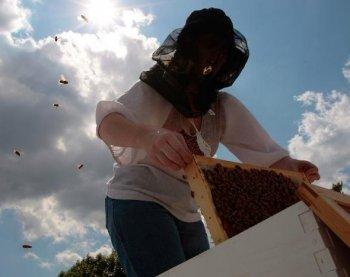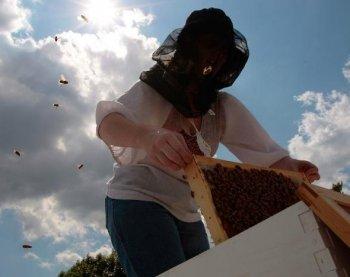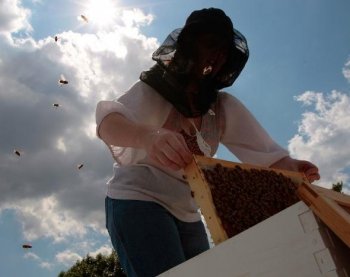NEW YORK— A report released by the United Nations Environment Programme last week revealed a dire situation for the world’s honeybee population.
“More than a dozen factors, ranging from declines in flowering plants and the use of memory-damaging insecticides to the world-wide spread of pests and air pollution, may be behind the emerging decline of bee colonies across many parts of the globe,” reads the U.N. press release.
The authors of the report warn that the bee problem is most definitely a human problem: The pollinators play a major role in agricultural production needed to feed a growing global population.
New York City’s beekeepers may have encountered resistance from neighbors worried about the painful sting of the sweet-loving insects, but the city’s bees are in a relatively good position—for now.
“Beekeepers in densely populated urban settings routinely have fewer problems with pests and diseases, ironically, because of isolation from other beekeepers. Though with the increase of numbers of urban beekeepers this may be changing,” notes Kim Flottum in her book, The Backyard Beekeeper: An Absolute Beginners Guide to Keeping Bees in Your Yard and Garden. She also points out that “losses from agricultural or homeowner pesticides are nearly zero.”
While dwindling flower populations are in turn causing a decline in the honeybee population, one may wonder where bees find their pollen in the concrete jungle.
This is one issue of contention between beekeepers and their neighbors. As Flottum observes, some popular sources of nectar are flower shops, flowerpots on balconies, and alleys with “garbage cans—some with garbage collectors, too.”
Beekeepers argue that bees are not really that harmful; the docile species preferred by urban beekeepers are interested in pollen, not in stinging people. They say it is a matter of educating people not to be afraid of the bees.
Urban gardeners can plant pollen-rich crops to keep their bees close to home, but that doesn’t always do the trick. One may have an abundant supply of fruits and vegetables in the fridge at home, but that will not necessary stop him or her from going to get a fruit-flavored slurpee from the corner store.
“More than a dozen factors, ranging from declines in flowering plants and the use of memory-damaging insecticides to the world-wide spread of pests and air pollution, may be behind the emerging decline of bee colonies across many parts of the globe,” reads the U.N. press release.
The authors of the report warn that the bee problem is most definitely a human problem: The pollinators play a major role in agricultural production needed to feed a growing global population.
New York City’s beekeepers may have encountered resistance from neighbors worried about the painful sting of the sweet-loving insects, but the city’s bees are in a relatively good position—for now.
“Beekeepers in densely populated urban settings routinely have fewer problems with pests and diseases, ironically, because of isolation from other beekeepers. Though with the increase of numbers of urban beekeepers this may be changing,” notes Kim Flottum in her book, The Backyard Beekeeper: An Absolute Beginners Guide to Keeping Bees in Your Yard and Garden. She also points out that “losses from agricultural or homeowner pesticides are nearly zero.”
While dwindling flower populations are in turn causing a decline in the honeybee population, one may wonder where bees find their pollen in the concrete jungle.
This is one issue of contention between beekeepers and their neighbors. As Flottum observes, some popular sources of nectar are flower shops, flowerpots on balconies, and alleys with “garbage cans—some with garbage collectors, too.”
Beekeepers argue that bees are not really that harmful; the docile species preferred by urban beekeepers are interested in pollen, not in stinging people. They say it is a matter of educating people not to be afraid of the bees.
Urban gardeners can plant pollen-rich crops to keep their bees close to home, but that doesn’t always do the trick. One may have an abundant supply of fruits and vegetables in the fridge at home, but that will not necessary stop him or her from going to get a fruit-flavored slurpee from the corner store.







